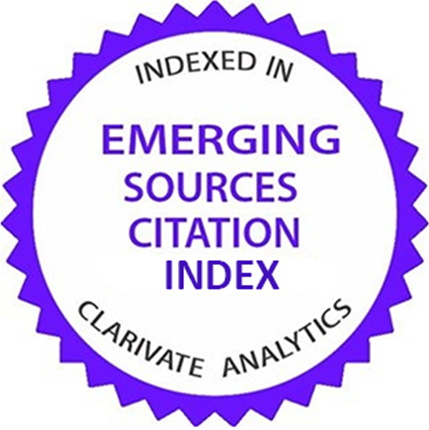Central retinal artery occlusion presenting with headache and sudden painless blurring of vision
Abstract
The patient was a 61-year-old smoker male, who presented to emergency department (ED) with complaints of sudden onset of headache followed by painless blurring of vision of the right eye that was started 10 hours prior to the admission. Due to blood pressure of 190/104 mmHg at home, the patient had taken amlodipine 10mg orally. The patient reported some episodes of transient ischemic attacks in his past medical history, for which he did not take any advice from physicians. The patient was also found to be hypertensive with deranged cholesterol. On examination in ED, the patient was afebrile, and had pulse rate= 88/min, blood pressure (BP)= 130/90 mmHg, respiratory rate=22/min, and O2 Saturation=99% in room air. There was not any positive finding in systemic examination. Patient was admitted for further evaluation and management. Paraclinical lab tests were all reported in normal range. Echocardiography revealed left ventricular ejection fraction (LVEF) of 60%, with no regional wall motion abnormality (RWMA), mild concentric left ventricular hypertrophy (LVH) and normal cardiac chambers. In view of Headache, brain computed tomography (CT) scan was performed, in which, there was prominence of sulci, basal cistern, sylvian fissure and ventricular system suggestive of age-related diffuse cerebral atrophy. Ill-defined hypodensities were seen in bilateral periventricular white matter, suggestive of chronic ischemic changes. Later, brain magnetic resonance imaging (MRI) was also performed, which revealed multiple discrete and confluent areas of hyperintensity scattered in subcortical deep and periventricular white matter of both cerebral hemispheres, suggestive of nonspecific small vessel ischemic changes, likely a combination of ischemic demyelination chronic lacunar infarcts and prominent perivascular space. The ventricular system and subarachnoid space were prominent, suggestive of age-related cerebral atrophy. In the next step, cervical and brain MRI angiography was performed, which revealed 100% occlusion of right internal carotid artery at its origin, with no distal reformation of the artery in the neck and intracranial part. The right middle and anterior cerebral artery were filling via circle of Willis and were severely diffusely narrowed in calibre. There were mild atheromatous changes in the left common carotid artery and carotid bulb causing mild narrowing. Bilateral vertebral arteries were normal. There was evidence of diffuse severe narrowing and poor visualization of entire left anterior cerebral artery. Ophthalmology reference was taken and fundus examination was done. On examination, the patient was found to have finger counting close to face with no improvement with glasses. In the right eye, anterior segment examination showed relative afferent pupillary defect (RAPD), while fundus examination revealed retinal background pale white with cherry red spot in macula and absent venous pulsation in the right eye, suggestive of Central Artery Retinal Obstruction (CRAO), and thread like blood vessels and Grade II Hypertensive retinopathy. After starting the low molecular weight heparin, antiplatelet and steroid, vision improved from finger counting close to face to finger counting at 3 feet distance. Patient was later discharged under follow-up for further recovery.
2. Duker JS. Retinal Arterial Obstruction. In: Yanoff M, Duker JS, editors. Ophthalmology. 2nd ed. St Louis: Mosby; 2004. P: 854-61.
3. American Academy of Ophthalmology. Retina and Vitreus. Last major revision 2015–2016. [Available from: https://www.aao.org/Assets/ec4923aa6a904d0aa4e8a12b3bf5bdf8/636312525282830000/bcsc1718-s12-pdf]
4. Rudkin A, Lee A, Chen C. Vascular risk factors for central retinal artery occlusion. Eye. 2009;24(4):678–81.
5. Bradvica M, Benašić T, Vinković M. Retinal vascular occlusions. Advances in Ophthalmology. 2012:357-89. [Available from: https://web.archive.org/web/20121225005758id_/http://cdn.intechopen.com:80/pdfs/31149/InTech-Retinal_vascular_occlusions.pdf]
6. Andrew F, Riley MB, Neil S. Recovery of vision after bilateral arteritic central retinal artery occlusion. Clin Exp Ophthalmol. 2004;32(2):226-8.
7. Hayreh SS, Zimmerman MB, Kimura A, Sanon A. Central retinal artery occlusion. Retinal survival time. Exp Eye Res. 2004;78(3):723 36.
| Files | ||
| Issue | Vol 7 No 1 (2023): Winter (February) | |
| Section | Case based learning points | |
| DOI | 10.18502/fem.v7i1.11700 | |
| Keywords | ||
| Emergency Medicine | ||
| Rights and permissions | |

|
This work is licensed under a Creative Commons Attribution-NonCommercial 4.0 International License. |










